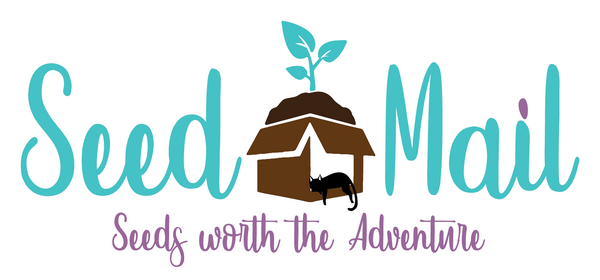
Waltham Butternut Squash
Seed Count: Approx. 10 seeds
Days to Maturity: 85-105 days
Description: Waltham Butternut Squash is a classic heirloom favorite, with rich, nutty, sweet, delicious flavor that is loaded with nutrients and vitamins. Each plant will yield about 4-5, tear shaped, hard, tan colored fruits with yellow, smooth textured flesh and small seed cavities that can be used in a multitude of ways. Fruits grow to about 4-5 lbs each, and average around 9 inches long, with thick, straight, and cylindrical necks. Roast them, bake them, puree them into soup. The possibilities are endless with these babies. This variety has great storage capabilities, is super easy to grow, and its thick solid stems can even resist pesky squash vine borers! Its vines are vigorous and can be grown vertically on a trellis. Make sure to give this old time favorite some space in your garden.
How To Grow
Sowing: Squash need warm soil to germinate, so wait until soil is at least 65
degrees. They also do not transplant well, so peat pots or pellets are the best option. Plant 3-5 squash seeds about 1 inch deep. Once they germinate, thin to 2 of the healthiest sprouts. Squash need a lot of space to grow, so try growing on the outer edges of your garden, or a place that has ample space for them to sprawl. You can also grow them vertically, but for big varieties make sure to add a support hammock under developing squash. You can do this with tulle, or old t-shirts.
Growing: Squash are 80-90% water, so they need a lot of water to grow, however, only water them when they need it. If the plant looks healthy, there is no need to water daily. When the soil is dry and the plant looks limp, give it a long deep drink. Squash do not tolerate frost, so provide protection from cold weather. Also, avoid getting the leaves wet, because it can cause rot and mildew issues. Squash are susceptible to squash borers, cucumber beetles, and squash bugs. Squash borers can and will kill your plants overnight, so make sure to keep an eye for damage, and take precautions to protect your plants, like applying an organic insecticide or diatomaceous earth. When the squash start to develop pinch off remaining blooms to direct energy into squash growth, or they will stay small (which I allowed to happen since I prefer them smaller).
Harvesting: Squash can be harvested as soon as the stem begins to dry and the skin becomes too hard to pierce with a fingernail. Harvest squash before the first frost. To harvest cut the stem with a sharp knife, leaving a 2-3" length. Do not carry the squash by the stem; a broken stem causes the squash to deteriorate quickly. Cure the squash in the sun or a dry location until the stem shrivels; do not wash squash you intend to store. If kept in 45-50 degrees, most squash will last for up to 5 months. Once squash has been cured, the seeds are mature. Cut it open, remove the pulp and seeds; rinse off pulp and air dry the seeds. Seeds can store up to 4 years.




